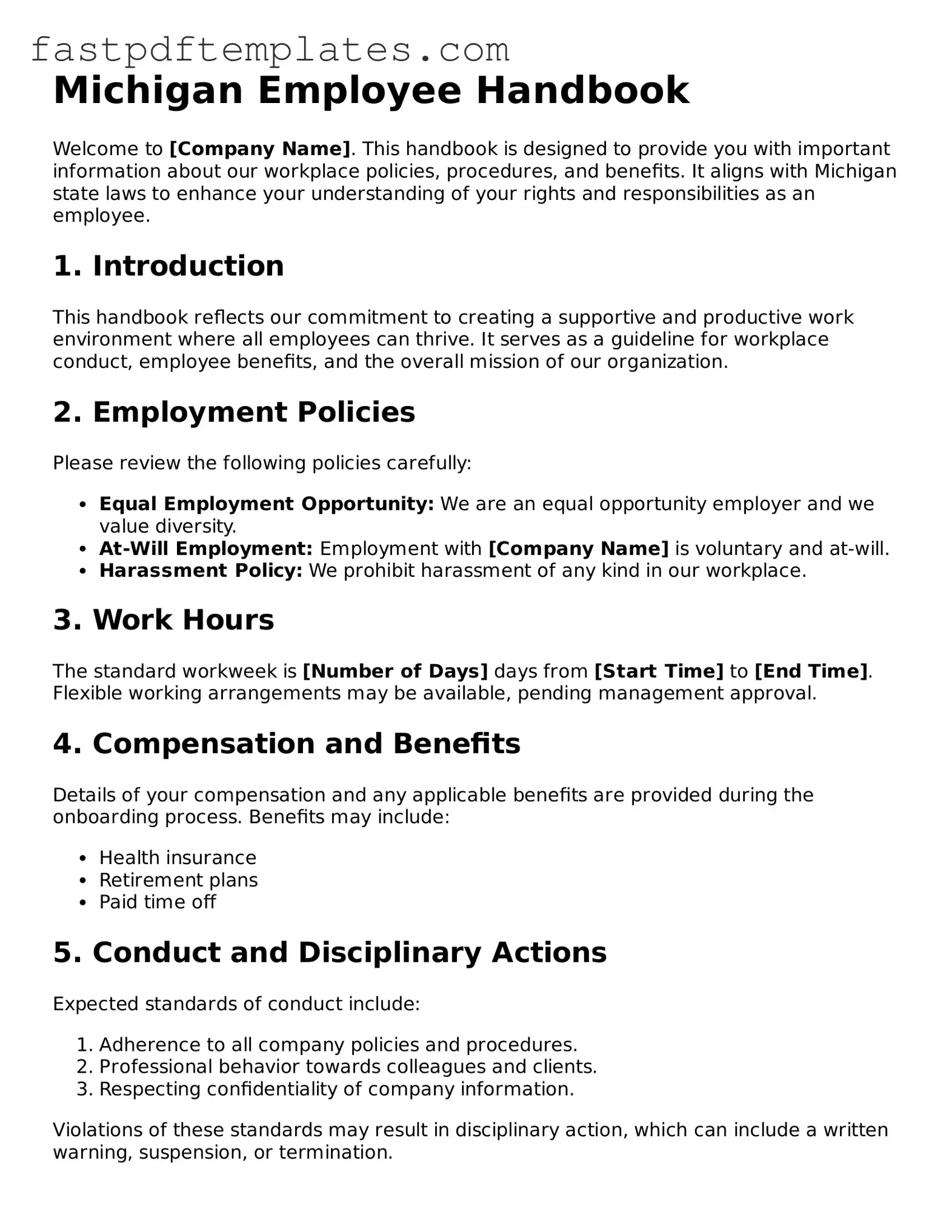Michigan Employee Handbook
Welcome to [Company Name]. This handbook is designed to provide you with important information about our workplace policies, procedures, and benefits. It aligns with Michigan state laws to enhance your understanding of your rights and responsibilities as an employee.
1. Introduction
This handbook reflects our commitment to creating a supportive and productive work environment where all employees can thrive. It serves as a guideline for workplace conduct, employee benefits, and the overall mission of our organization.
2. Employment Policies
Please review the following policies carefully:
- Equal Employment Opportunity: We are an equal opportunity employer and we value diversity.
- At-Will Employment: Employment with [Company Name] is voluntary and at-will.
- Harassment Policy: We prohibit harassment of any kind in our workplace.
3. Work Hours
The standard workweek is [Number of Days] days from [Start Time] to [End Time]. Flexible working arrangements may be available, pending management approval.
4. Compensation and Benefits
Details of your compensation and any applicable benefits are provided during the onboarding process. Benefits may include:
- Health insurance
- Retirement plans
- Paid time off
5. Conduct and Disciplinary Actions
Expected standards of conduct include:
- Adherence to all company policies and procedures.
- Professional behavior towards colleagues and clients.
- Respecting confidentiality of company information.
Violations of these standards may result in disciplinary action, which can include a written warning, suspension, or termination.
6. Employee Acknowledgment
By signing below, you acknowledge that you have received a copy of the Michigan Employee Handbook and understand its contents:
Employee Name: ____________________________
Date: ____________________________
Company Representative: ____________________________
Date: ____________________________
